Becoming Nature (2018)
60x16 cm
Sculpture, installation, body cast in cement and plaster, dead branches, soil 5 x 3 meters
Ishaq makes casts of his own diasporic body, knees and elbows, which resemble perhaps a giant seed to be grown and nurtured. And a promise of return. Parts of the body carry an archive of sensorial memory that transmits experiences, evocations and traumas across generations.
Conceptually, I draw inspiration from Édouard Glissant’s writing, specifically Poetics of Relation, his conception of Rhizomatic and fluid identity, and ideas of rootedness and uprootedness. Ishaq’s practice incorporates land and soil, recognizing its symbolic significance as both a beginning and an endpoint, a transtemporal portal, an archive of migration.
Selected for Bloomberg New Contemporaries 2021,
part of a group exhibition at South London Gallery 2021/22, and Firstsite Gallery, Colchester 2021
New Contemporaries digital platform artist page and interveiw
https://bnc2021.newcontemporaries.org.uk/artists/asuf-ishaq
New Contemporaries website artist page
https://www.newcontemporaries.org.uk/2021/artists/asuf-ishaq-
Shown also at a group exhibition, ‘Sight for Sore Eyes’, at Gossamer Fog gallery, London in 2018
![]()
![]()
![]()
![]()
Articles of Home Exhibition, Reid Gallery, Glasgow 2023
![]()
![]()
New Contemporaries 2021, South London Gallery, London 2022
![]()
![]()
![]()
![]()
![]()
![]()
Goldsmiths MFA Interim Exhibition 2019
60x16 cm
Sculpture, installation, body cast in cement and plaster, dead branches, soil 5 x 3 meters
Ishaq makes casts of his own diasporic body, knees and elbows, which resemble perhaps a giant seed to be grown and nurtured. And a promise of return. Parts of the body carry an archive of sensorial memory that transmits experiences, evocations and traumas across generations.
Conceptually, I draw inspiration from Édouard Glissant’s writing, specifically Poetics of Relation, his conception of Rhizomatic and fluid identity, and ideas of rootedness and uprootedness. Ishaq’s practice incorporates land and soil, recognizing its symbolic significance as both a beginning and an endpoint, a transtemporal portal, an archive of migration.
Selected for Bloomberg New Contemporaries 2021,
part of a group exhibition at South London Gallery 2021/22, and Firstsite Gallery, Colchester 2021
New Contemporaries digital platform artist page and interveiw
https://bnc2021.newcontemporaries.org.uk/artists/asuf-ishaq
New Contemporaries website artist page
https://www.newcontemporaries.org.uk/2021/artists/asuf-ishaq-
Shown also at a group exhibition, ‘Sight for Sore Eyes’, at Gossamer Fog gallery, London in 2018
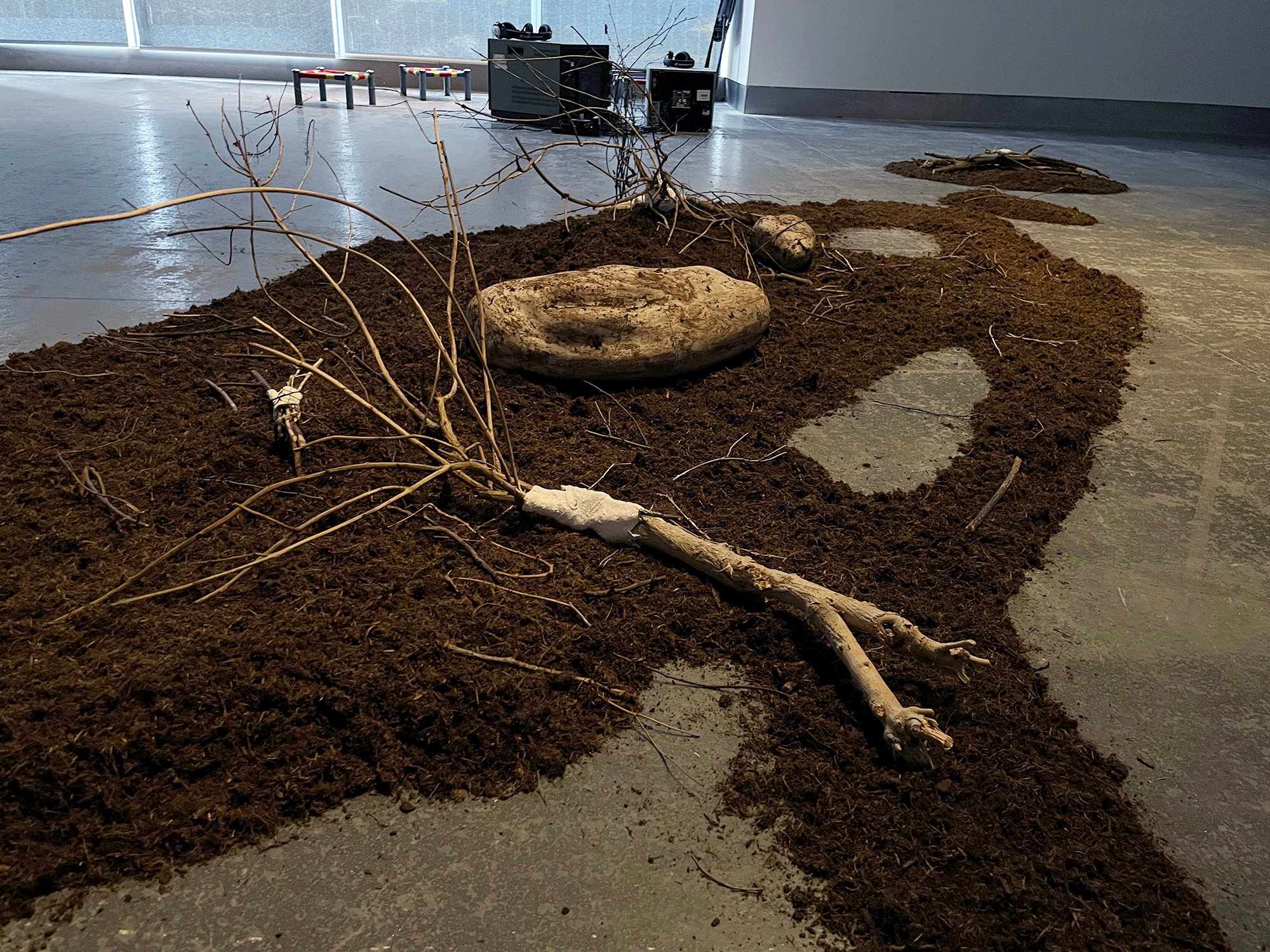
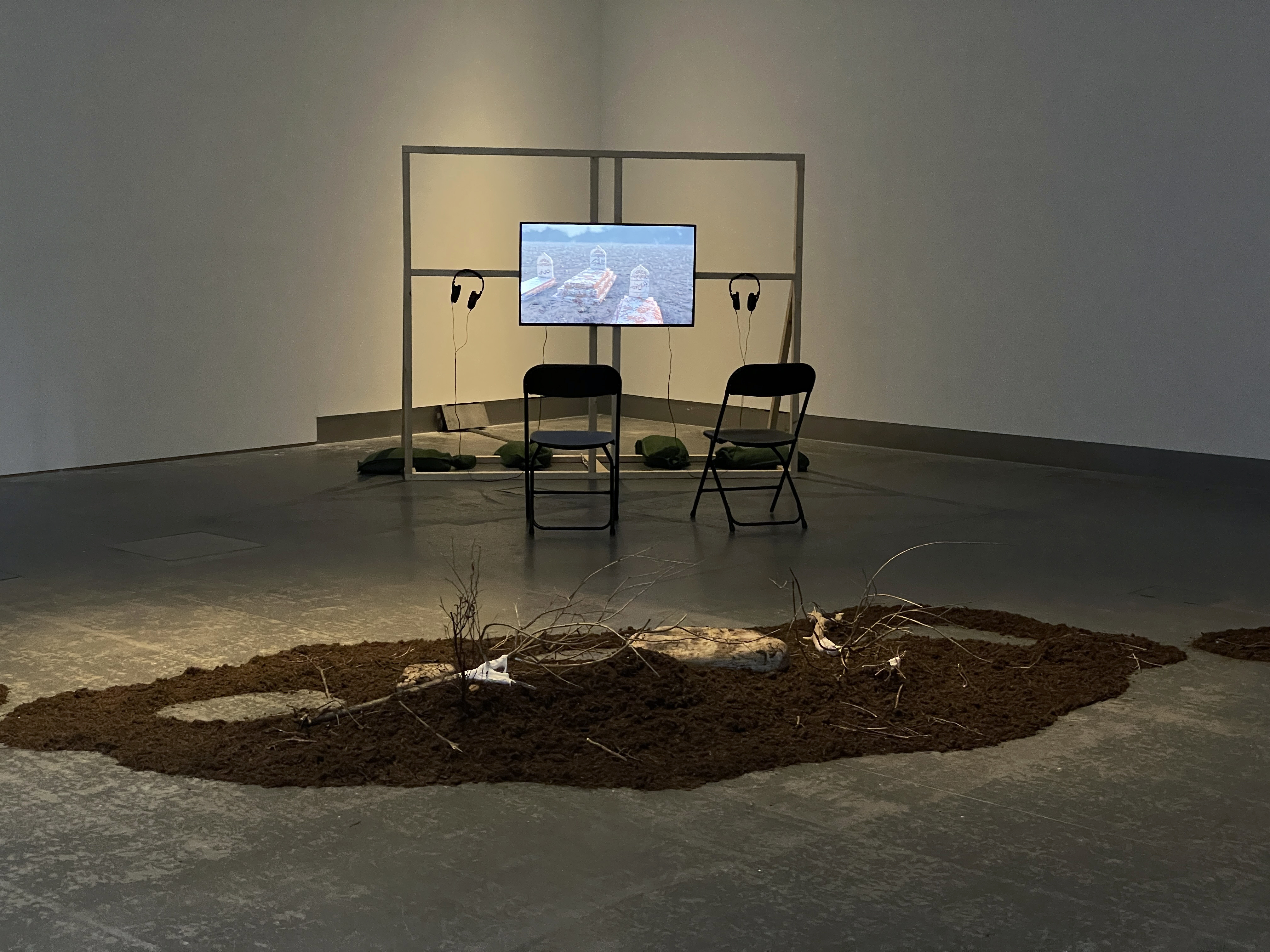
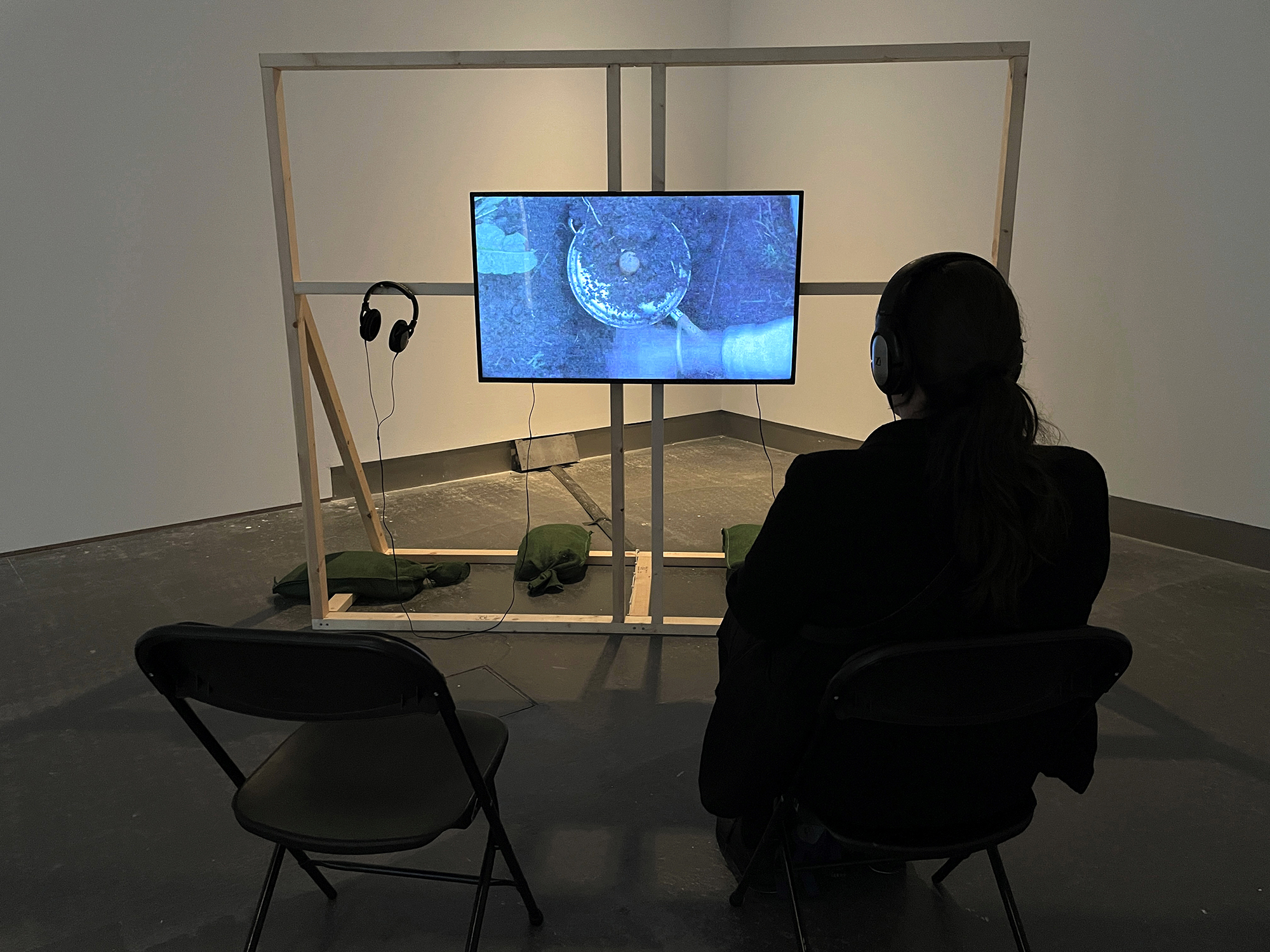
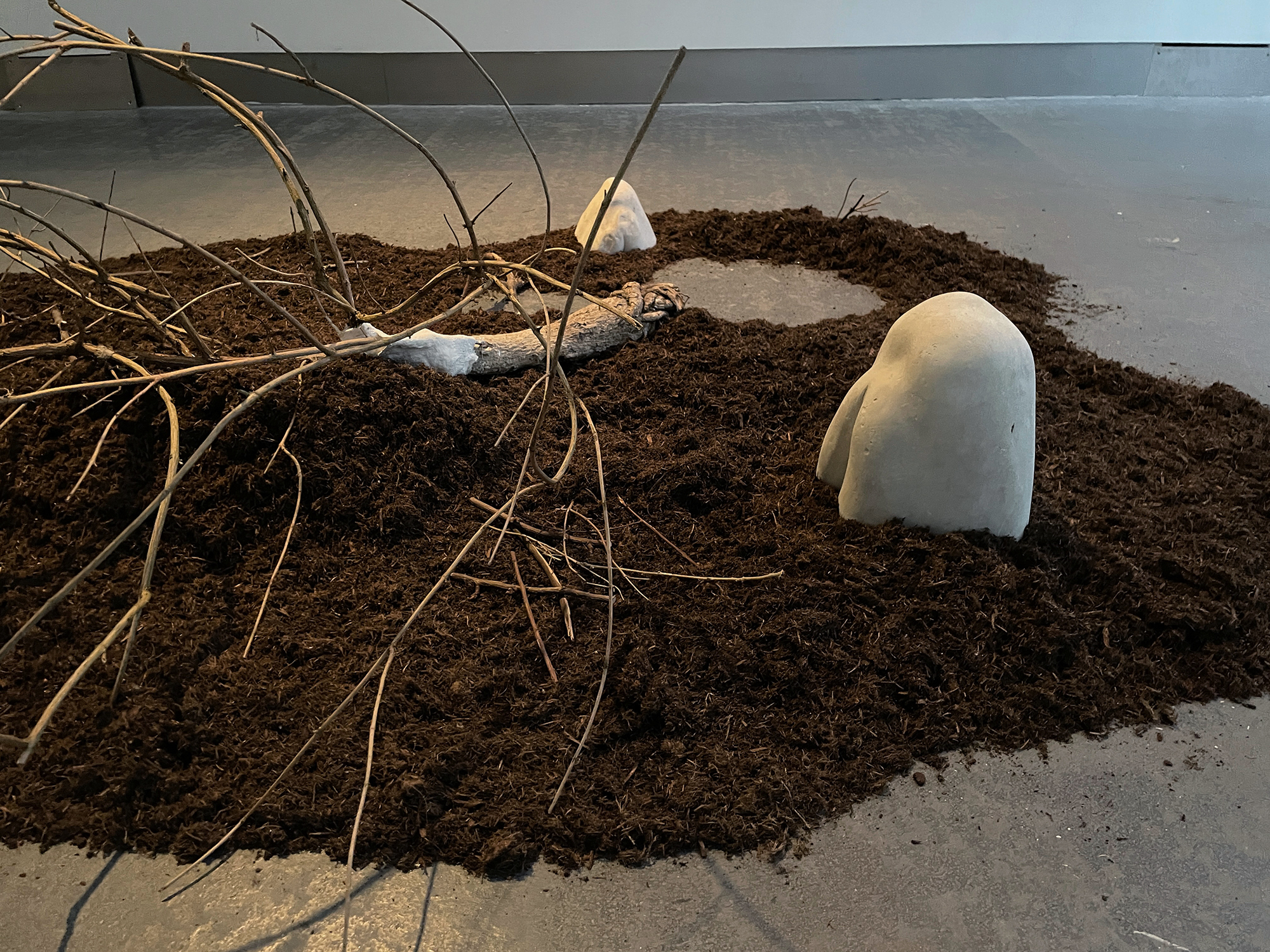
Articles of Home Exhibition, Reid Gallery, Glasgow 2023

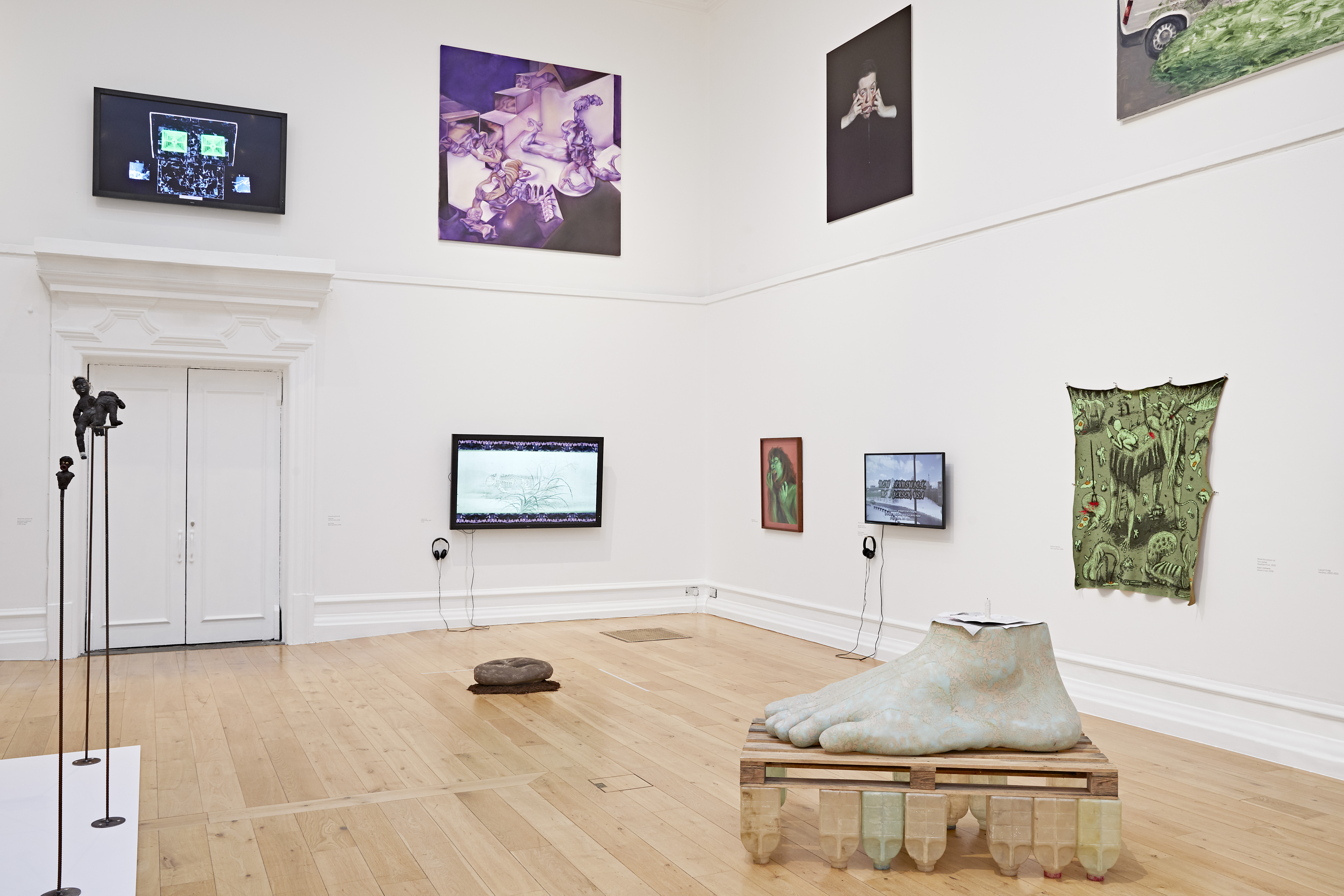
New Contemporaries 2021, South London Gallery, London 2022

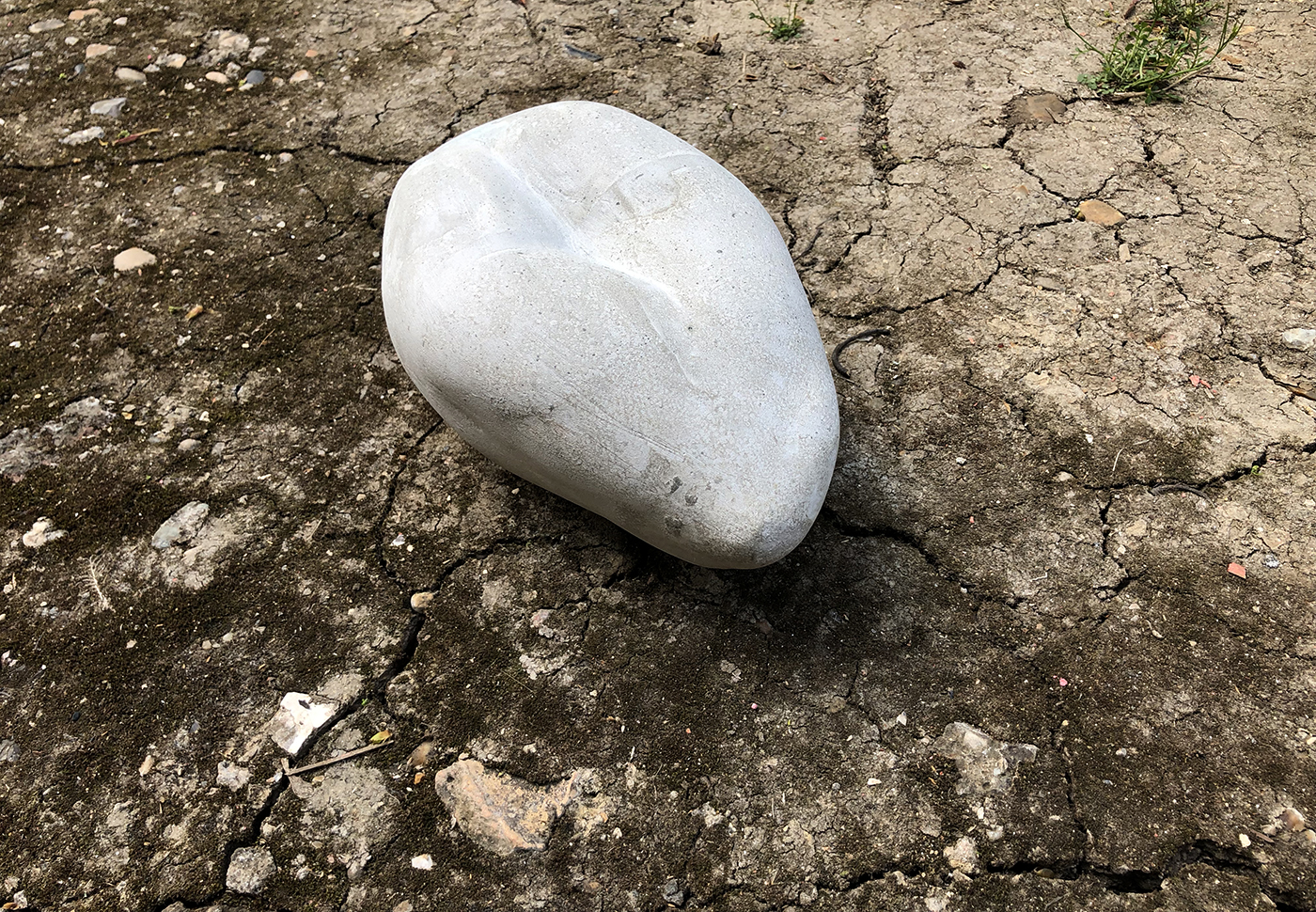
Becoming Nature from Asuf Ishaq on Vimeo.
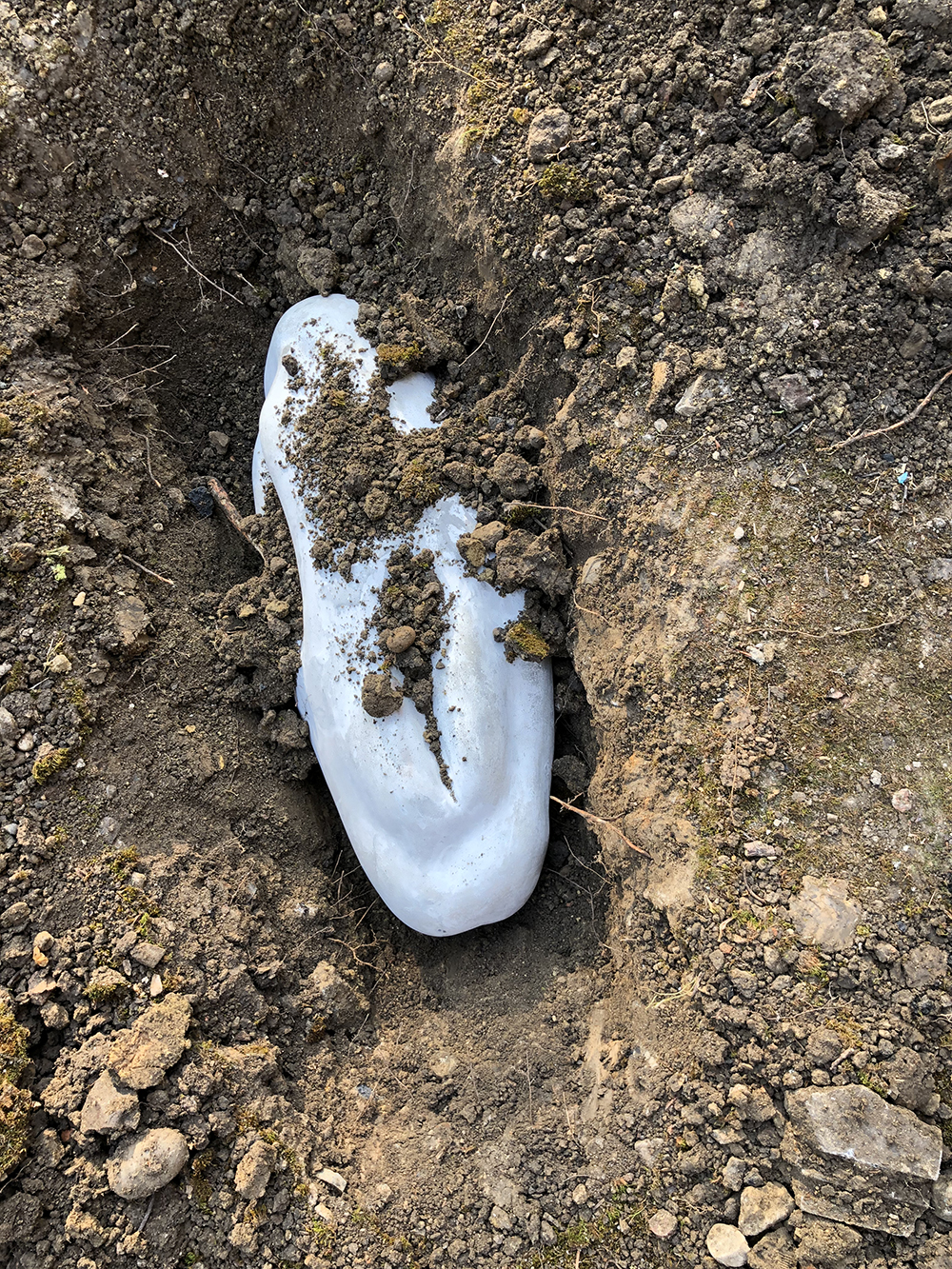
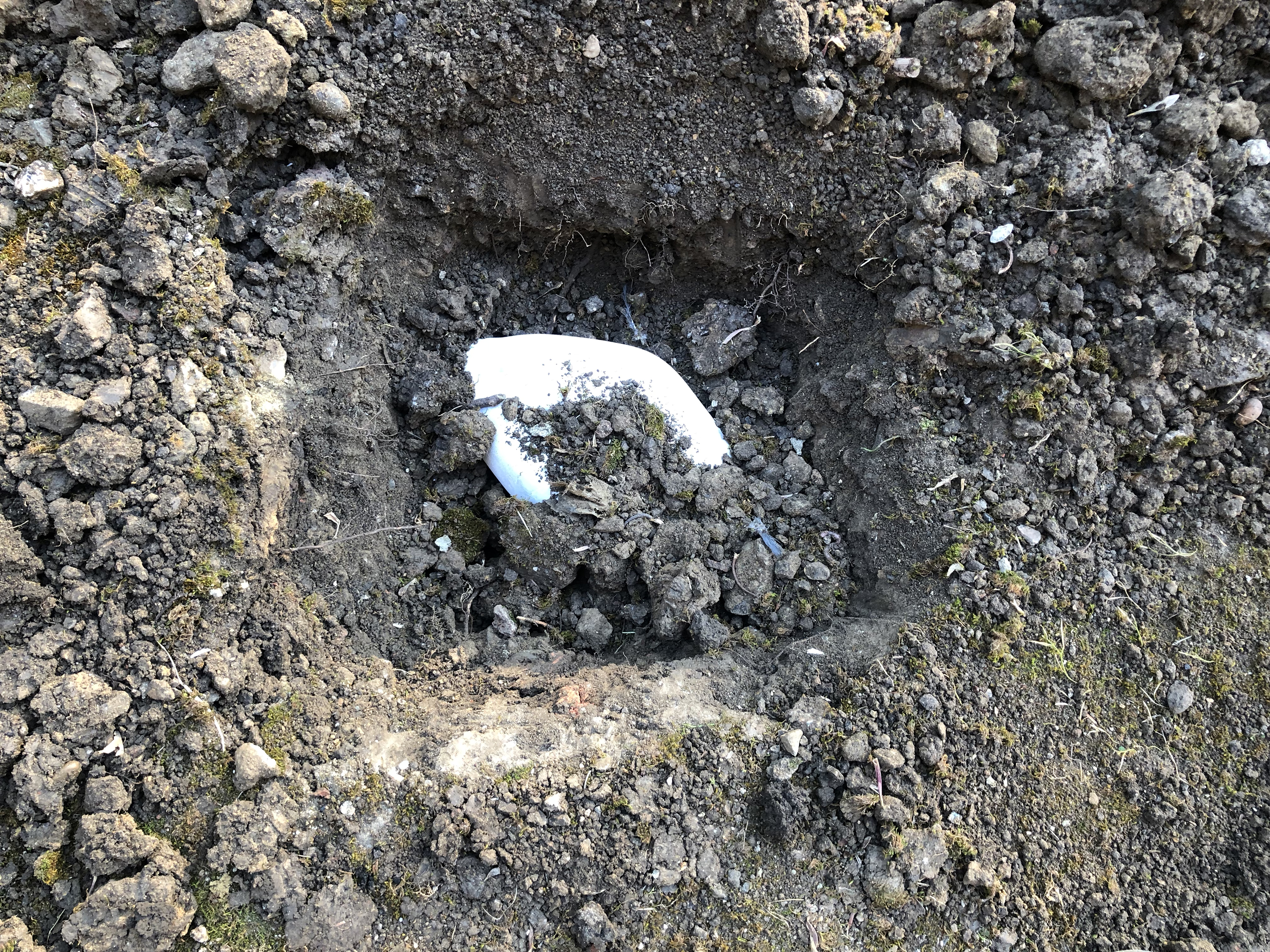
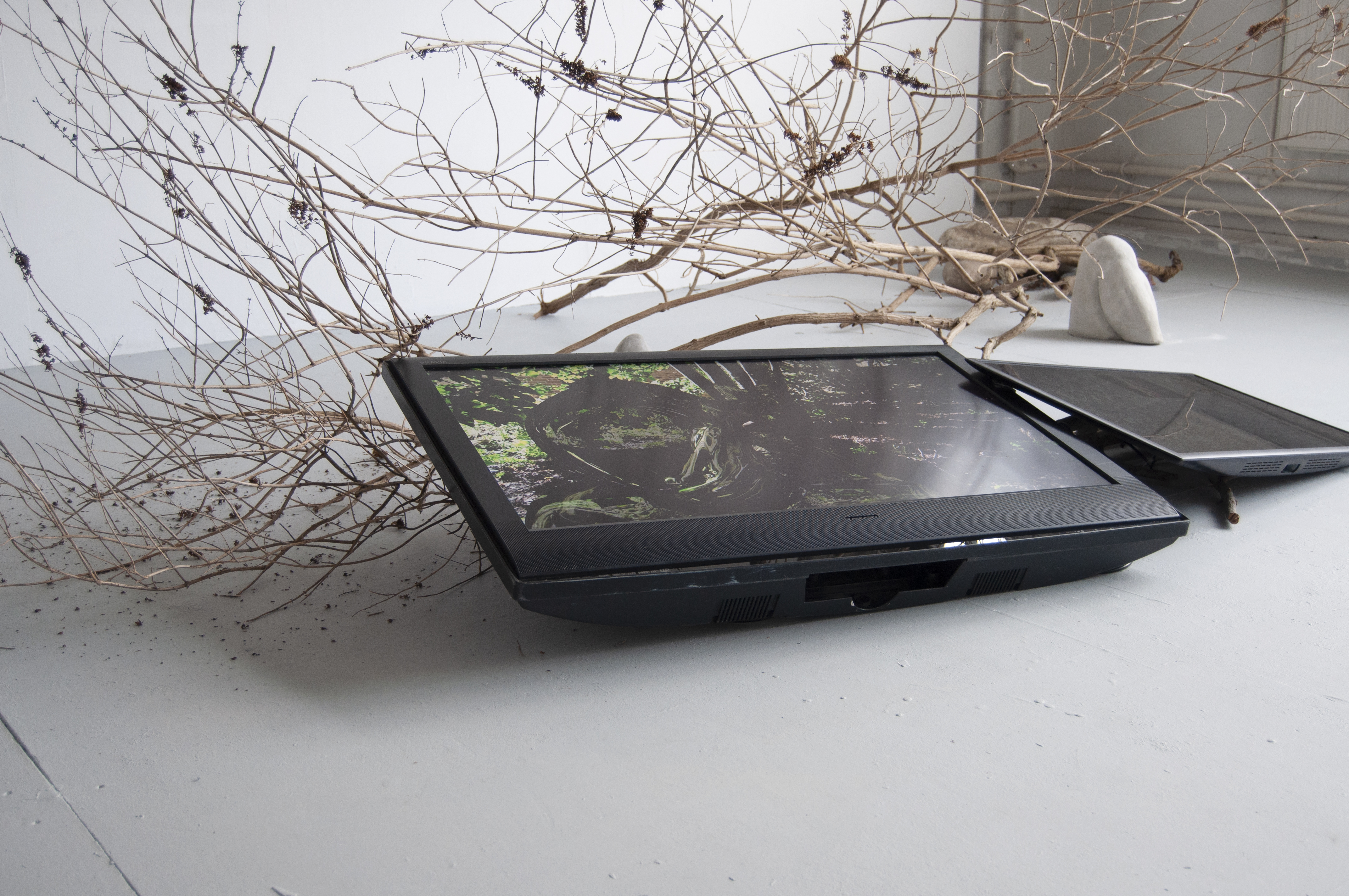
Goldsmiths MFA Interim Exhibition 2019
Not Quite Alive
(2018/19) at Goldsmiths
Sculpture, installation, CGI, moving image, sound
Exhibited at:
Articles of Home, Reid Gallery, Glasgow 2023
MFA Interim Exhibition 2019, Goldsmiths, London. Film and sculptural installations exhibited
https://gsaexhibitions.co.uk/exhibition/articles-of-home-asuf-ishaq/
The film begins with a translucent head rising from the soil, comprehending its own corporeality and surveying its surroundings, perhaps an alien life form dropped into the woodland, or a terrestrial being exhumed from the soil. In this landscape, things and sounds are disorientated, inverted and displaced. The movement of the trees above appears unfamiliar and cybernated, and the psithurism is electronic
Represents the silenced objects or things in the racial imaginary in which people are reduced to the non-human, and classed as lesser species, in another words closer to ‘nature’. He incorporates land and soil, recognizing its symbolic significance as both a beginning and an endpoint, a transtemporal portal, an archive of migration.
For Foucault, the body is a static conduit for biopower, but perhaps here it is also more active. Maybe the transhuman body in Not Quite Alive is a mediator, a translator, a prosthetic mouthpiece for the archival, passive yet omniscient soil and the legacies of colonialism carved into it. Its testimony, a detuned, ambiguous voice, recites lines from Sun Ra’s The Satellites Are Spinning: ‘The satellites are spinning / A new day is dawning / The galaxies are waiting / For planet Earth’s awakening.’ (Sun Ra, 2020). Satellites must spin to remain stable in relation to the rotation of the Earth. They must be dynamic and evolving but outwardly appear constant. (Text by curator Christy O'Beirne)
![]()
![]()
![]()
![]()
![]()
Articles of Home, Reid Gallery, Glasgow 2023
(2018/19) at Goldsmiths
Sculpture, installation, CGI, moving image, sound
Exhibited at:
Articles of Home, Reid Gallery, Glasgow 2023
MFA Interim Exhibition 2019, Goldsmiths, London. Film and sculptural installations exhibited
https://gsaexhibitions.co.uk/exhibition/articles-of-home-asuf-ishaq/
The film begins with a translucent head rising from the soil, comprehending its own corporeality and surveying its surroundings, perhaps an alien life form dropped into the woodland, or a terrestrial being exhumed from the soil. In this landscape, things and sounds are disorientated, inverted and displaced. The movement of the trees above appears unfamiliar and cybernated, and the psithurism is electronic
Represents the silenced objects or things in the racial imaginary in which people are reduced to the non-human, and classed as lesser species, in another words closer to ‘nature’. He incorporates land and soil, recognizing its symbolic significance as both a beginning and an endpoint, a transtemporal portal, an archive of migration.
For Foucault, the body is a static conduit for biopower, but perhaps here it is also more active. Maybe the transhuman body in Not Quite Alive is a mediator, a translator, a prosthetic mouthpiece for the archival, passive yet omniscient soil and the legacies of colonialism carved into it. Its testimony, a detuned, ambiguous voice, recites lines from Sun Ra’s The Satellites Are Spinning: ‘The satellites are spinning / A new day is dawning / The galaxies are waiting / For planet Earth’s awakening.’ (Sun Ra, 2020). Satellites must spin to remain stable in relation to the rotation of the Earth. They must be dynamic and evolving but outwardly appear constant. (Text by curator Christy O'Beirne)





Articles of Home, Reid Gallery, Glasgow 2023
Mother (Excerpt)
2020
HD Film
16 minutes
In my recent film ‘Mother’, I explore the back story of a fifty year old photograph of my mother, and draw out memories and thoughts. I move through spaces, gathering up histories and memories that are lost or covered over in the movement of displacement, and begin to produce new knowledge. I explore the photograph with my mother, and involve her in my practice, a space where we normally would not overlap. I sensually explore both the surface of skin and of the photograph, untangling my mothers memories and thoughts. Bright space of the virtual environment, my reality, where the photograph is in the process of being restored. Photograph is a transitional and a transnational object, objects can be considered as any external object that a person partially incorporates in the process. Different times and spaces are explored, similar position in the house where the wall is always present and standing. Just as my mothers faith and pray, always solid as the wall and constant in her life, which has got her through difficult times.
Shown at Groundings online group screening at Goldsmiths CCA 2021
Articles of Home, Reid Gallery Glasgow 2023
https://gsaexhibitions.co.uk/exhibition/articles-of-home-asuf-ishaq/
Photography
https://www.flickr.com/photos/glasgowschoolart/albums/72177720305865507/with/52676854851/
The London Open 2022, Whitechapel Gallery London June - September 2022
https://thelondonopen.co.uk/artist/asuf-ishaq/
https://www.whitechapelgallery.org/the-london-open-2022-artists/
Film Programme: Regroundings online screening, Goldsmiths CCA 2021
https://goldsmithscca.art/event/film-programme-regroundings/
Artist Conversation
https://goldsmithscca.art/regroundings
![]()
![]()
The London Open 2022, Whitechapel Gallery
![]()
![]()
![]()
Articles of Home, Reid Gallery, Glasgow 2023
![]()
![]()
![]()
![]()
![]()
![]()
2020
HD Film
16 minutes
In my recent film ‘Mother’, I explore the back story of a fifty year old photograph of my mother, and draw out memories and thoughts. I move through spaces, gathering up histories and memories that are lost or covered over in the movement of displacement, and begin to produce new knowledge. I explore the photograph with my mother, and involve her in my practice, a space where we normally would not overlap. I sensually explore both the surface of skin and of the photograph, untangling my mothers memories and thoughts. Bright space of the virtual environment, my reality, where the photograph is in the process of being restored. Photograph is a transitional and a transnational object, objects can be considered as any external object that a person partially incorporates in the process. Different times and spaces are explored, similar position in the house where the wall is always present and standing. Just as my mothers faith and pray, always solid as the wall and constant in her life, which has got her through difficult times.
Shown at Groundings online group screening at Goldsmiths CCA 2021
Articles of Home, Reid Gallery Glasgow 2023
https://gsaexhibitions.co.uk/exhibition/articles-of-home-asuf-ishaq/
Photography
https://www.flickr.com/photos/glasgowschoolart/albums/72177720305865507/with/52676854851/
The London Open 2022, Whitechapel Gallery London June - September 2022
https://thelondonopen.co.uk/artist/asuf-ishaq/
https://www.whitechapelgallery.org/the-london-open-2022-artists/
Film Programme: Regroundings online screening, Goldsmiths CCA 2021
https://goldsmithscca.art/event/film-programme-regroundings/
Artist Conversation
https://goldsmithscca.art/regroundings
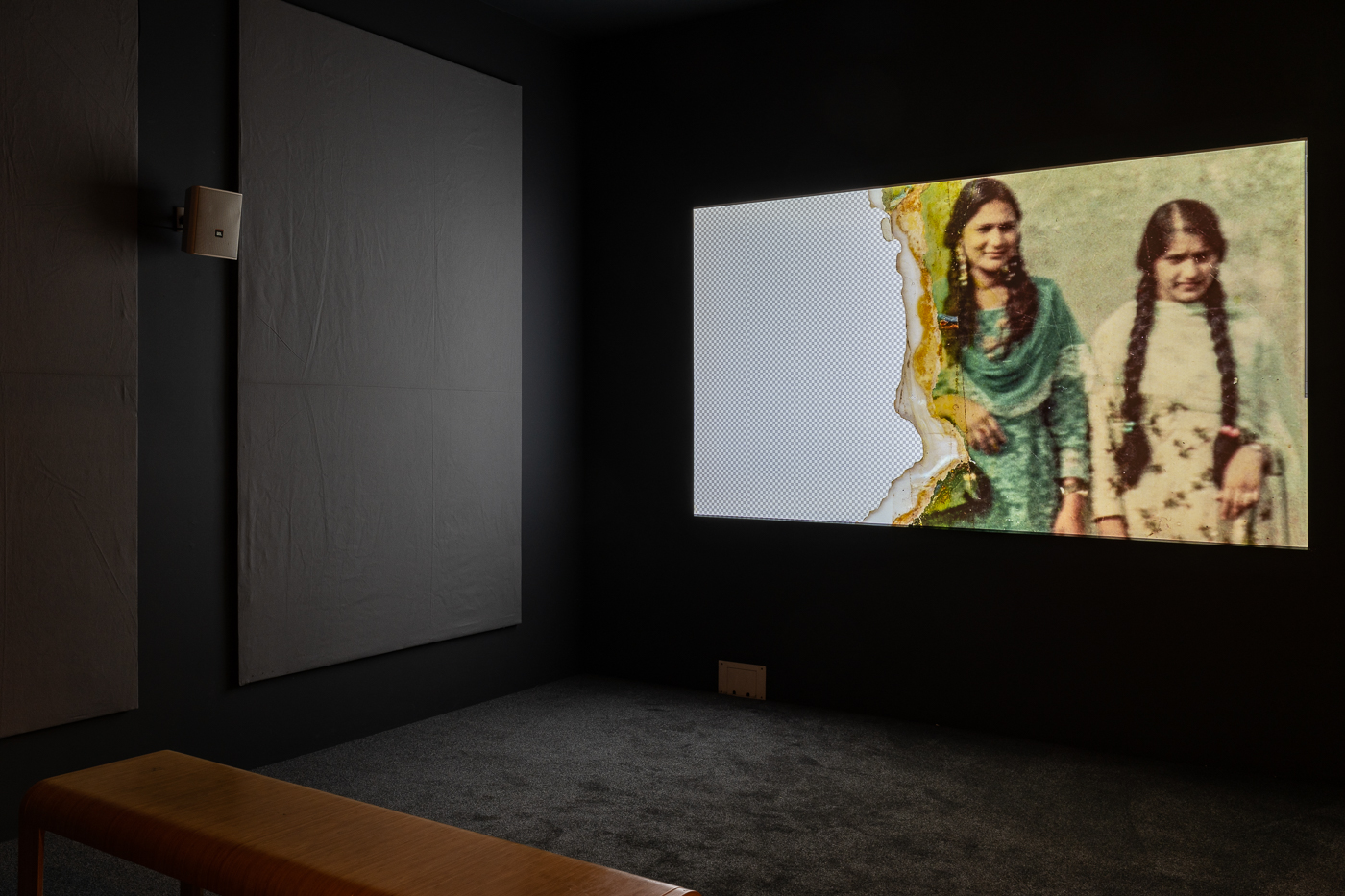
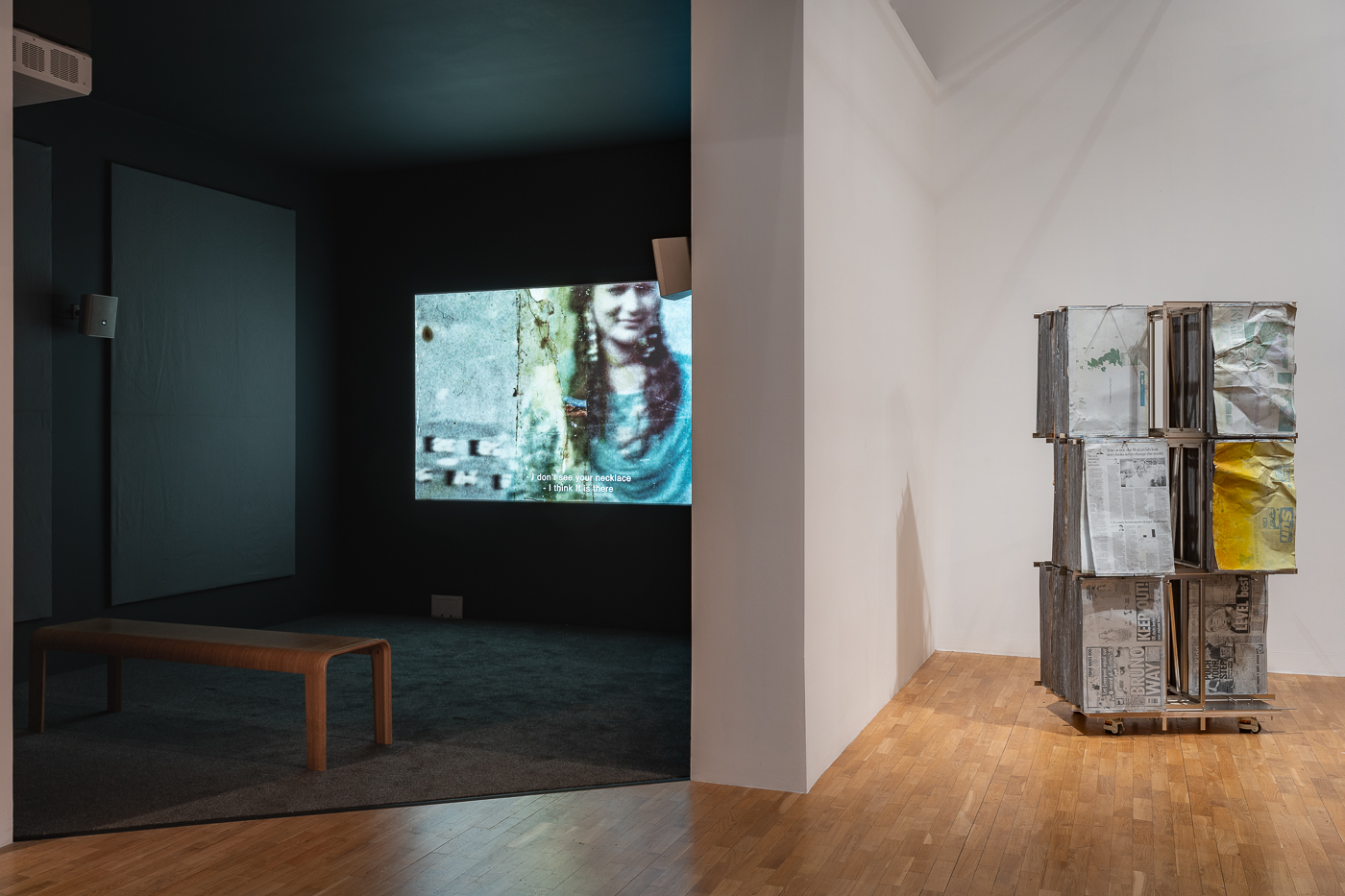
The London Open 2022, Whitechapel Gallery



Articles of Home, Reid Gallery, Glasgow 2023
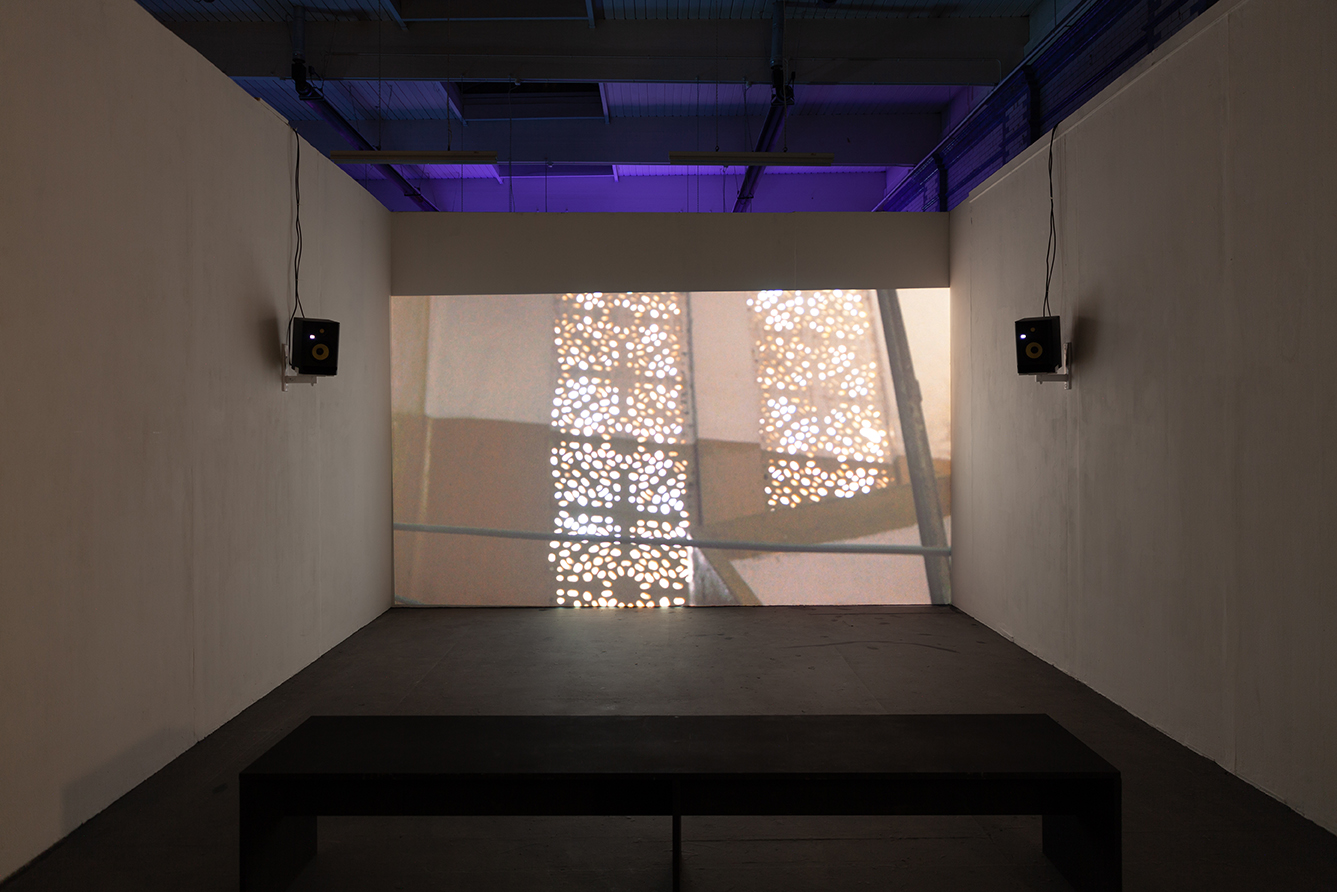
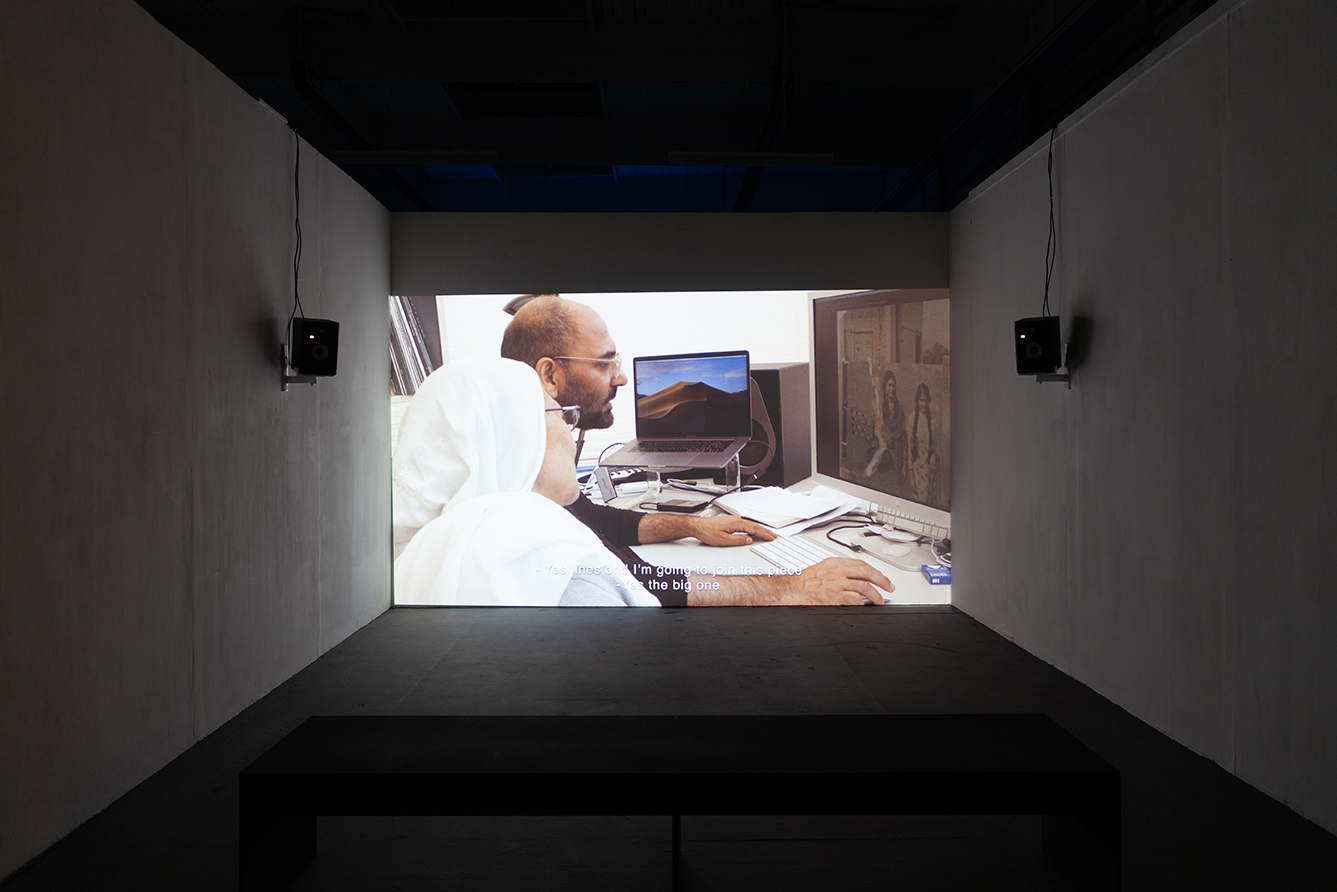

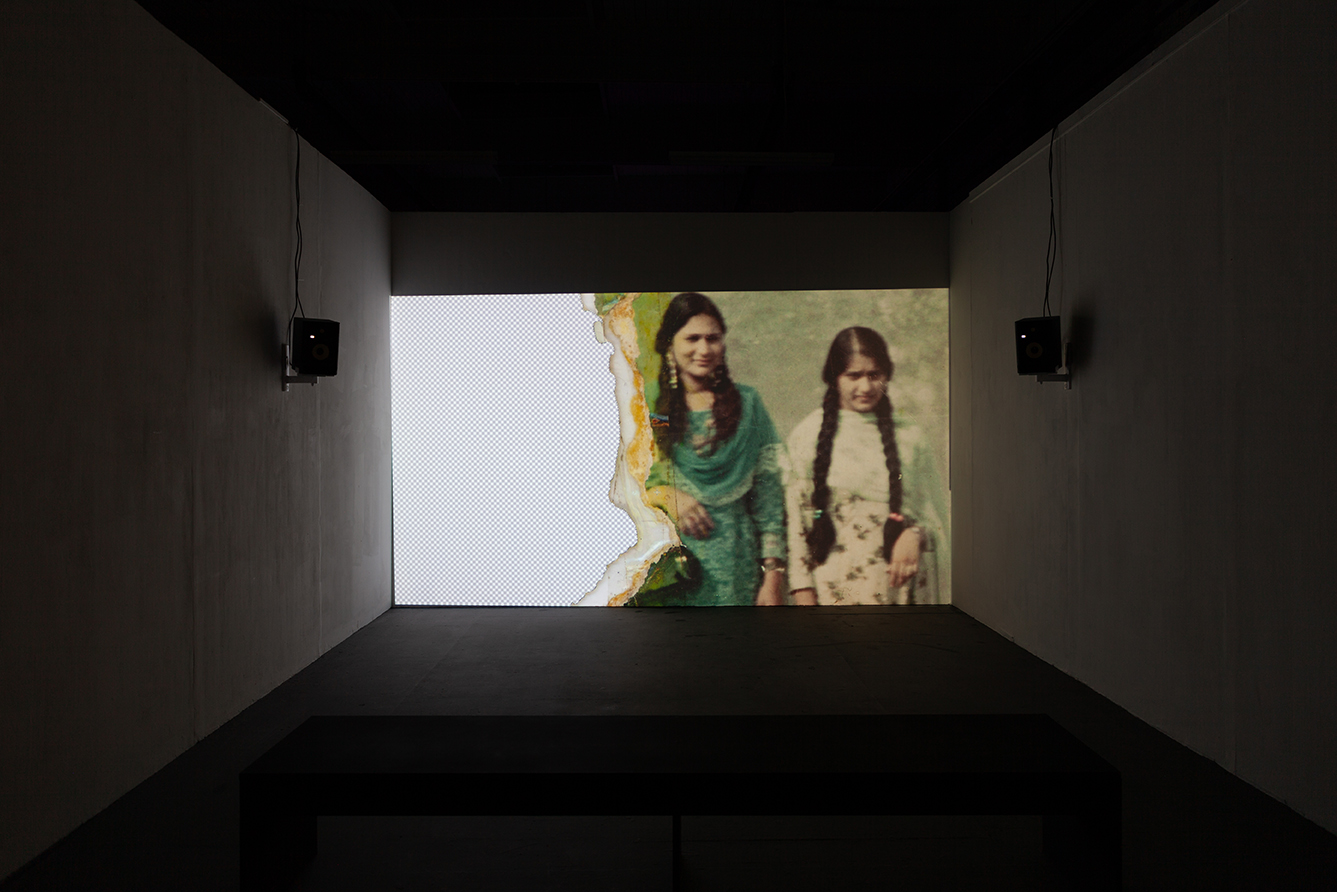


Tape Letter
2020
HD Film
2 mins 30 secs
In this film Ishaq re-acts the recordings his mother recording a voice letter to her family in Kashmir.
Tape letters or voice recordings of the 1960’s/70’s diaspora communities in UK, a British history that included Ishaq’s parents from Kashmir. I am exploring these intimate relationships and communication through technology, and voice messages. This is ongoing new project, Bishopsgate Institute London have an archive of tape cassette letter recordings of Pakistani’s who migrated to United Kingdom.
Ishaq’s works in ‘hybridity’ or hybrid forms, just as I navigate through my cultural identity. Mixing documentary, fiction, personal, and experimental genres, as well as different media and mediums, such as cement/plaster, metal, film and photography. By pushing the limits of any one of these genre, this hybrid way of working forces each genre to explain itself, to forgo any transparent relationship to the reality it represents, and to make evident the knowledge claims on which it is based. My way of working is in a position to do archeology, to dig up the traces that the dominant culture overlooks, and for that matter any fixed cultural organization.
![]()
![]()
![]()
Articles of Home Exhibition, Reid Gallery, Glasgow 2023
2020
HD Film
2 mins 30 secs
In this film Ishaq re-acts the recordings his mother recording a voice letter to her family in Kashmir.
Tape letters or voice recordings of the 1960’s/70’s diaspora communities in UK, a British history that included Ishaq’s parents from Kashmir. I am exploring these intimate relationships and communication through technology, and voice messages. This is ongoing new project, Bishopsgate Institute London have an archive of tape cassette letter recordings of Pakistani’s who migrated to United Kingdom.
Ishaq’s works in ‘hybridity’ or hybrid forms, just as I navigate through my cultural identity. Mixing documentary, fiction, personal, and experimental genres, as well as different media and mediums, such as cement/plaster, metal, film and photography. By pushing the limits of any one of these genre, this hybrid way of working forces each genre to explain itself, to forgo any transparent relationship to the reality it represents, and to make evident the knowledge claims on which it is based. My way of working is in a position to do archeology, to dig up the traces that the dominant culture overlooks, and for that matter any fixed cultural organization.
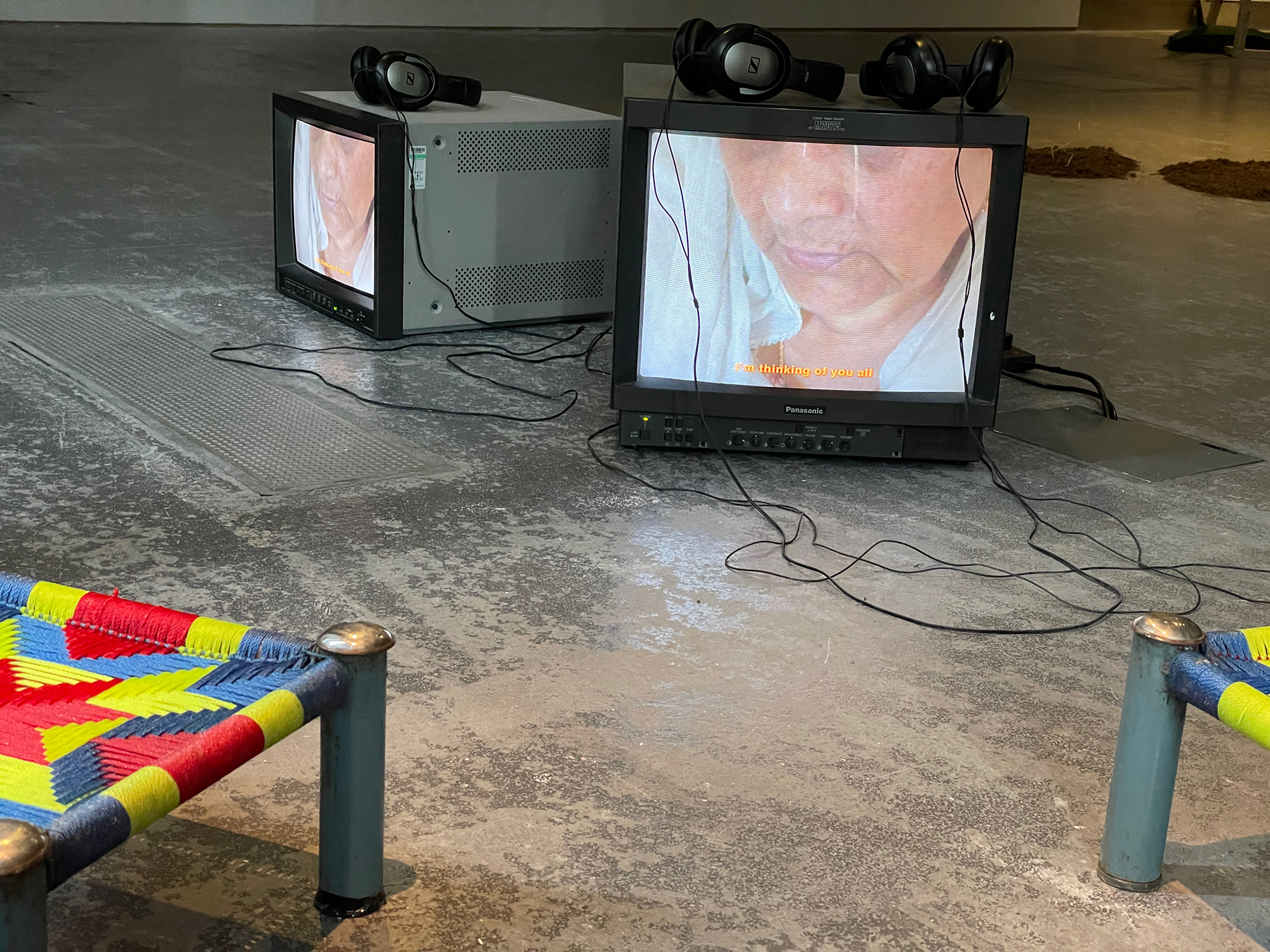


Articles of Home Exhibition, Reid Gallery, Glasgow 2023
Articles of Home (Excerpt)
2021
HD Film, CGI
10 minutes
Awarded film commission by Image Behaviour at ICA London, 2021
Film ‘Articles of Home’ is a commission by ICA London for Image Behaviour, which is an annual convening dedicated to experiments in artists’ moving image. ‘Articles of Home’ narrates migration experience as told through a relationship with objects and places; in this case things left behind by the artist's mother when she migrated to Britain. She hides her precious belongings in her cooking pot, burying them in the ground, a promise of return to reclaim them. His mother’s home village in Kashmir, Pakistan, is submerged underwater for part of the year because of the new water Mangla dam. During the dry season, the land is available for farming. ‘Articles of Home’explores what happens when this space can only be accessed temporarily, just as a recollection of memories. Ishaq deploys computer-generated graphics to reimagine the flooding village and uses photographs as a reference and memory landscape.
ICA Artist Profile
https://www.ica.art/films/image-behaviour-2022/articles-of-home
Read the interview
Image Behaviour
https://ica.art/films/image-behaviour-2022
![]()
![]()
![]()
![]()
![]()
![]()
![]()
![]()
![]()
![]()
![]()
Articles of Home Exhibition, Reid Gallery, Glasgow 2023
2021
HD Film, CGI
10 minutes
Awarded film commission by Image Behaviour at ICA London, 2021
Film ‘Articles of Home’ is a commission by ICA London for Image Behaviour, which is an annual convening dedicated to experiments in artists’ moving image. ‘Articles of Home’ narrates migration experience as told through a relationship with objects and places; in this case things left behind by the artist's mother when she migrated to Britain. She hides her precious belongings in her cooking pot, burying them in the ground, a promise of return to reclaim them. His mother’s home village in Kashmir, Pakistan, is submerged underwater for part of the year because of the new water Mangla dam. During the dry season, the land is available for farming. ‘Articles of Home’explores what happens when this space can only be accessed temporarily, just as a recollection of memories. Ishaq deploys computer-generated graphics to reimagine the flooding village and uses photographs as a reference and memory landscape.
ICA Artist Profile
https://www.ica.art/films/image-behaviour-2022/articles-of-home
Read the interview
Image Behaviour
https://ica.art/films/image-behaviour-2022

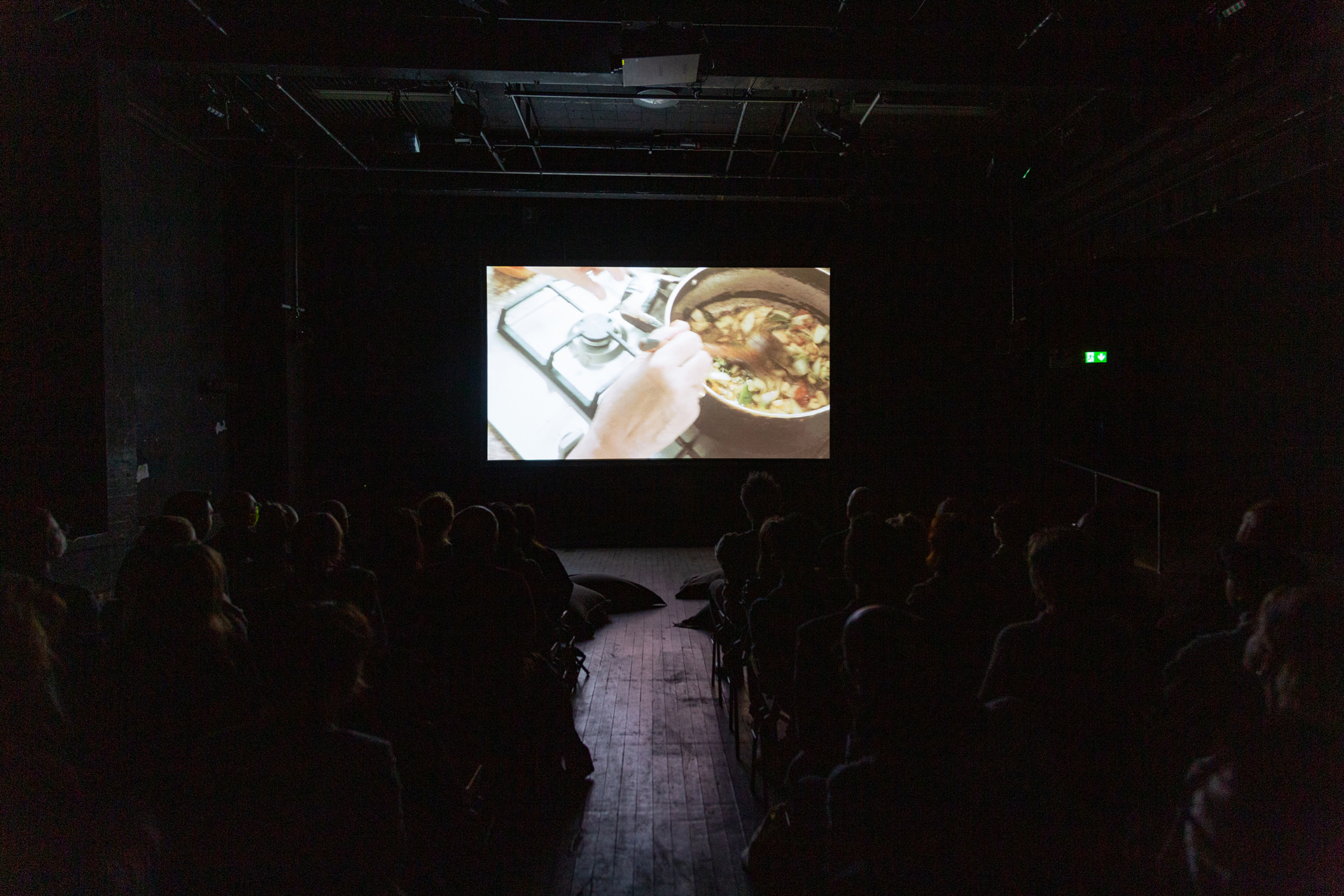
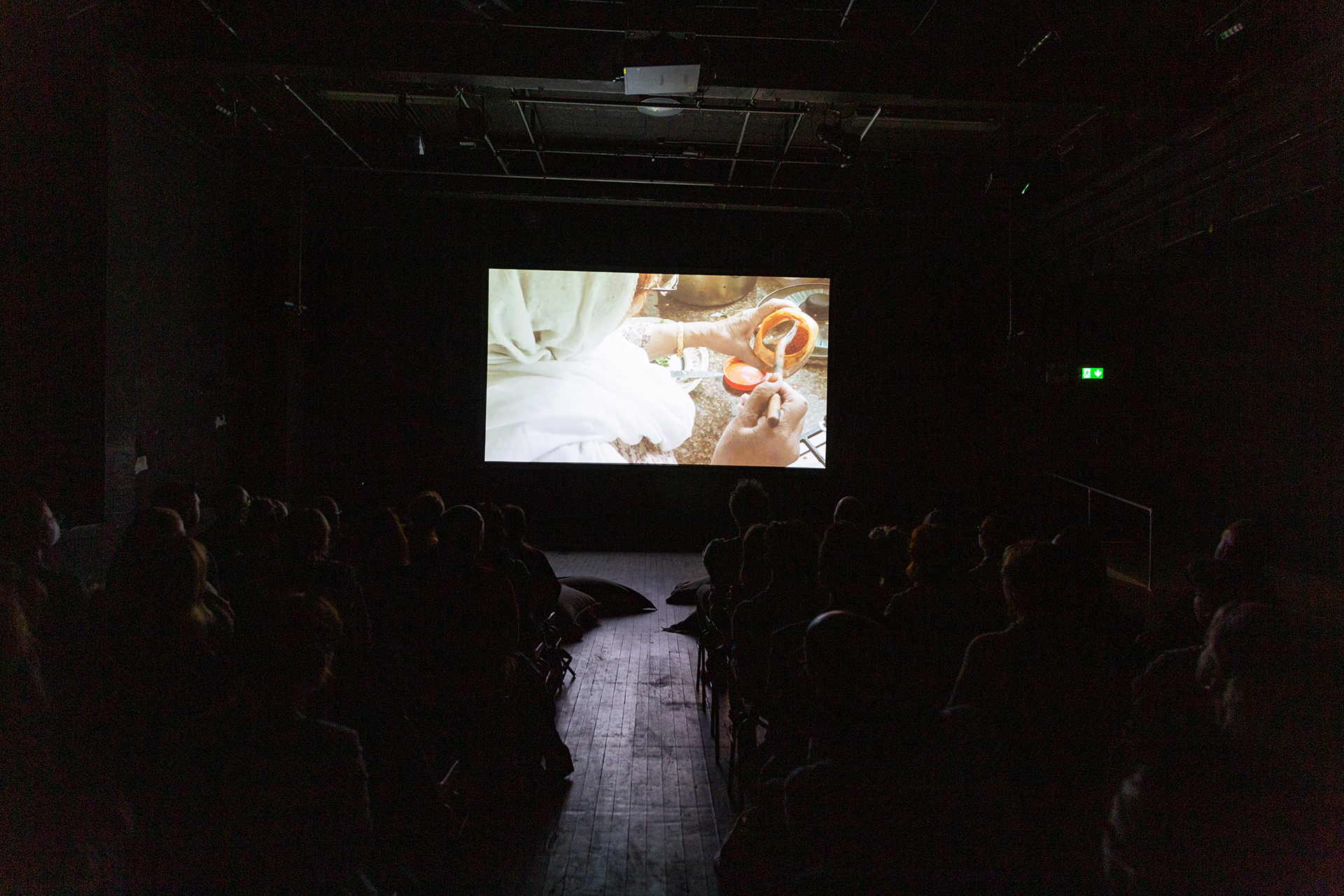
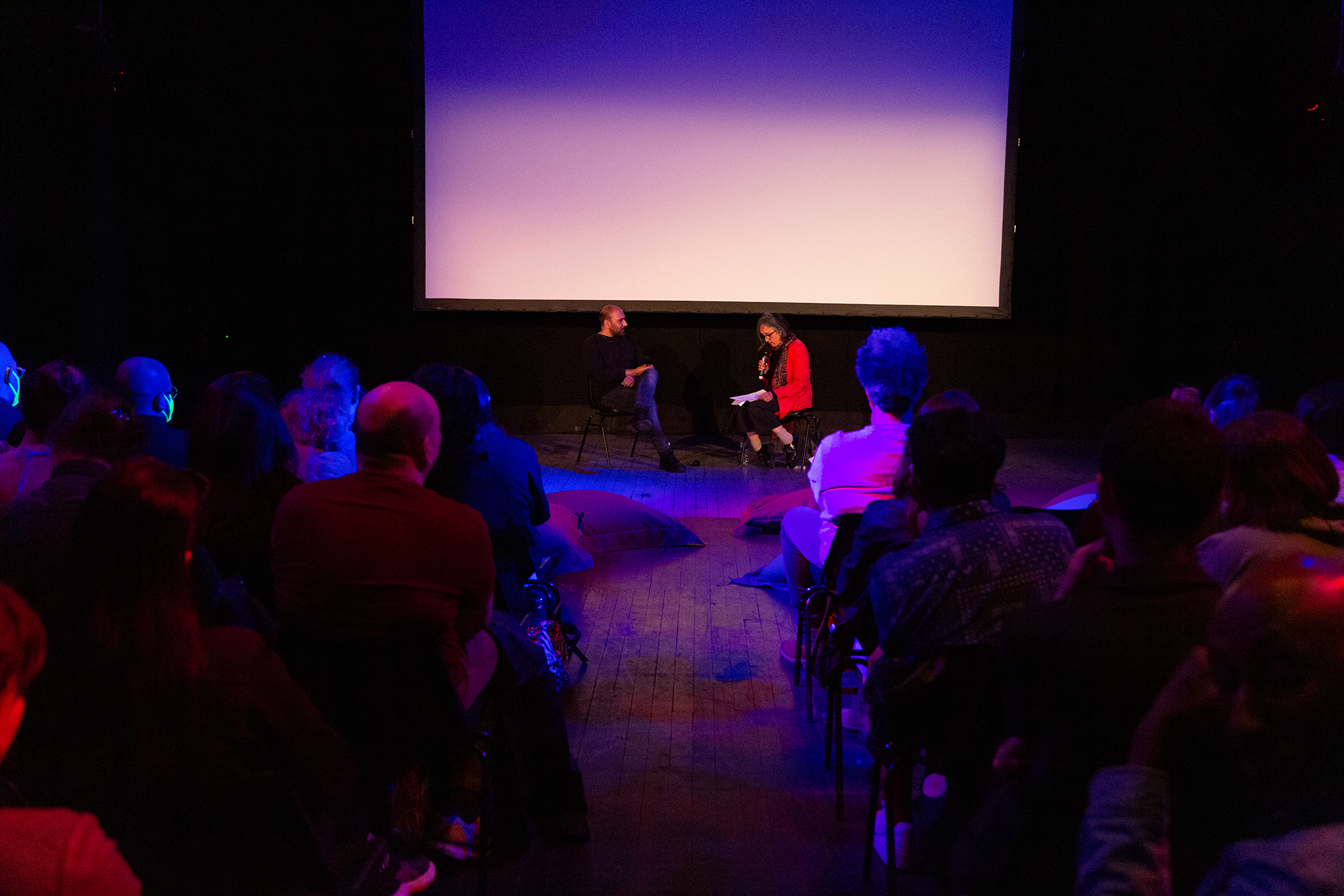
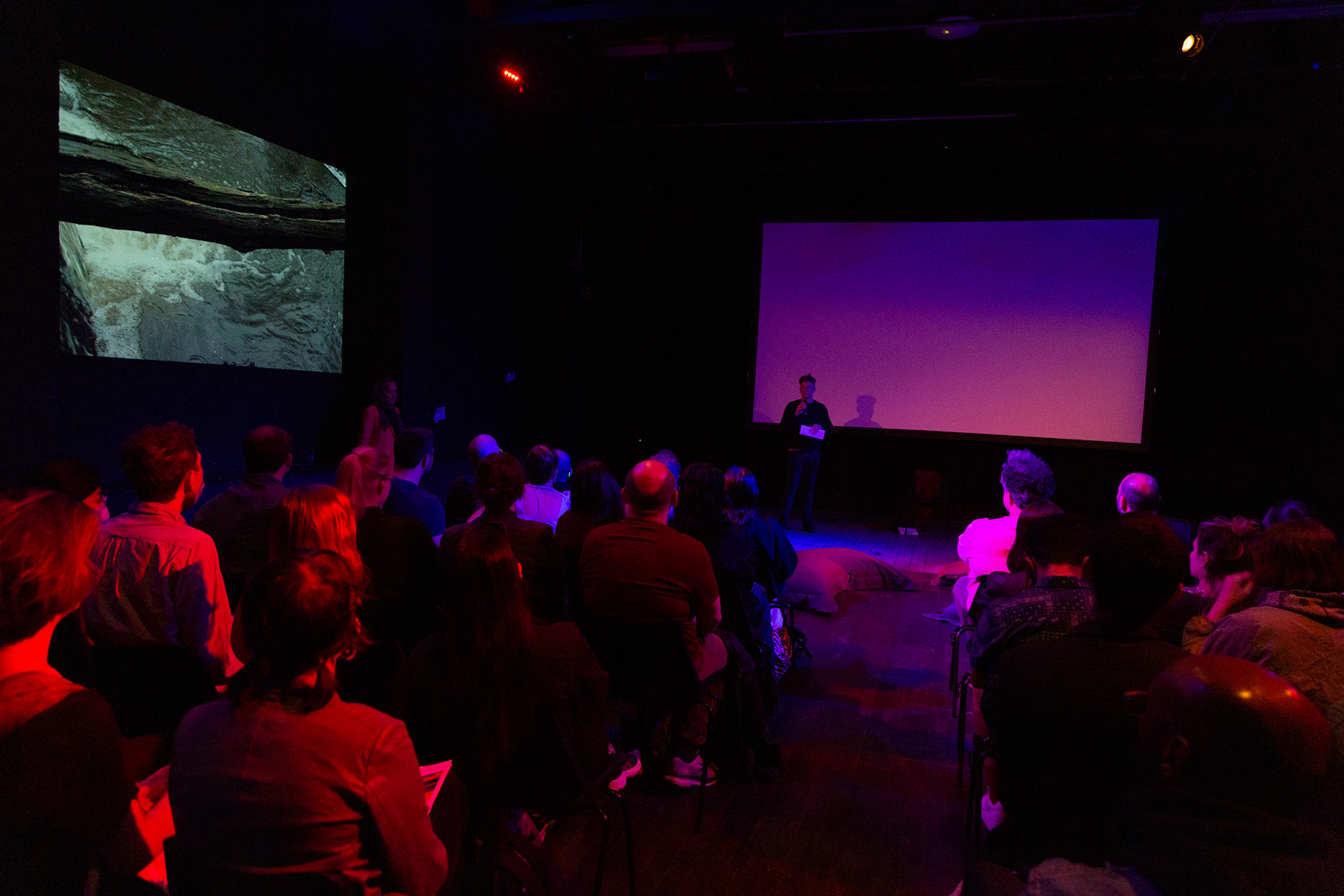
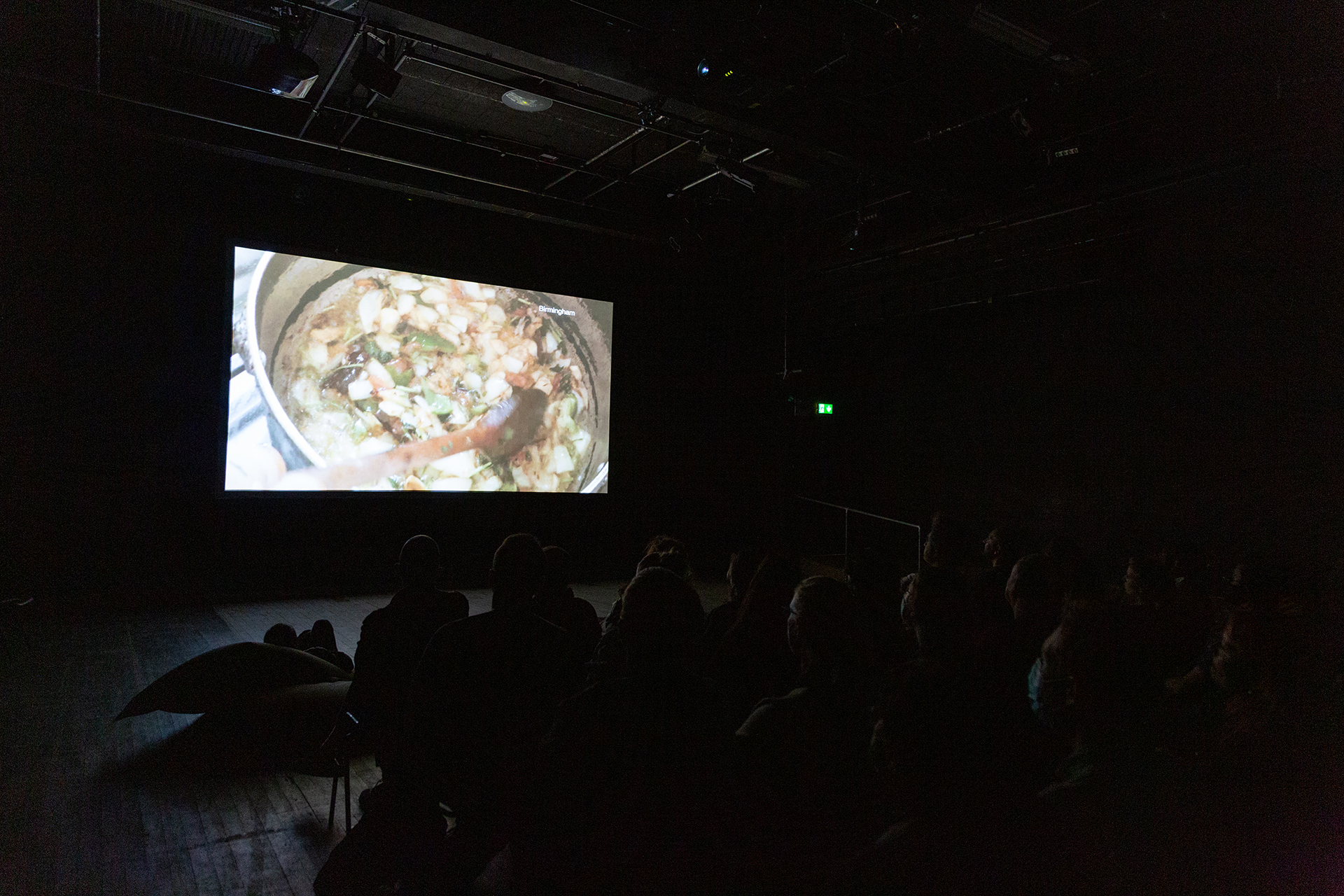




Articles of Home Exhibition, Reid Gallery, Glasgow 2023